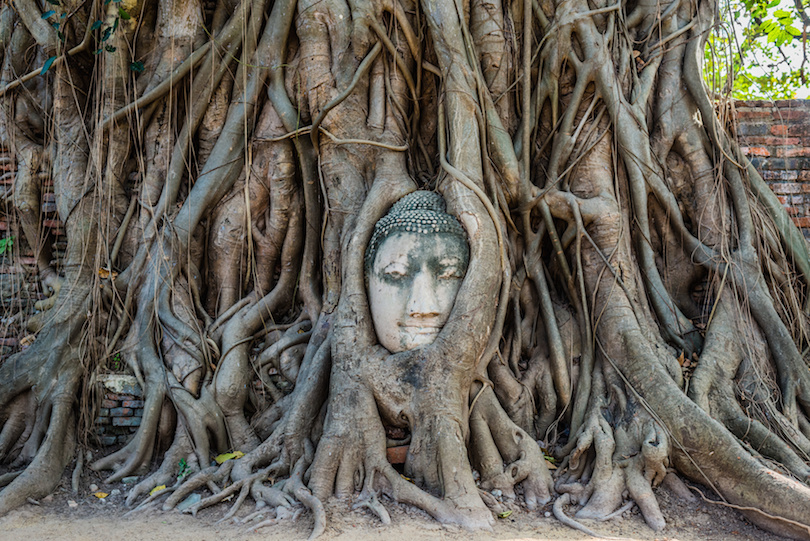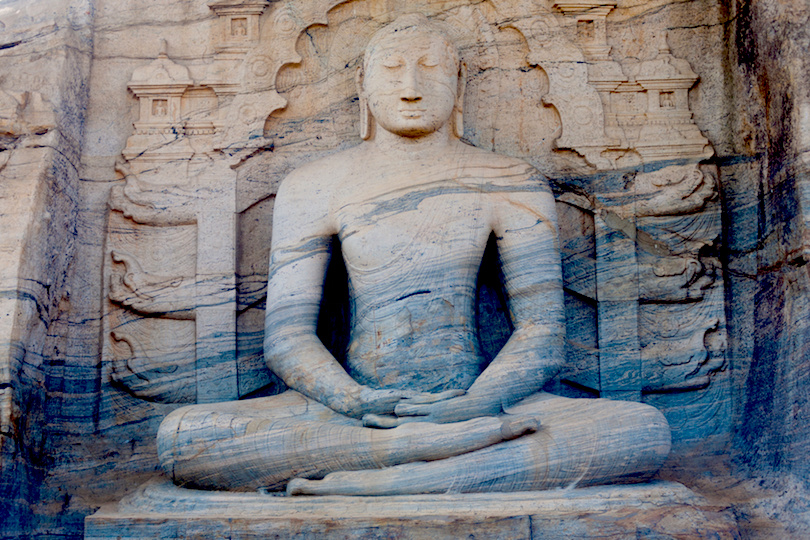Then I Wander

By insisting on ascetic discipline and life of homeless wandering, Gotama presented mindfulness as a total life commitment.
Sleeping out in the open, eating once a day, and frequently on the road, Gotama cuts a more austere figure than expected. His silent wisdom comes from somewhere else. Learning about his early failures, and then the strange story of his success: how he created an ancient cult of meditation, through enigmatic silence, radical ideas, and a simple insistence on being mindfully aware of the moment.

The Giant Buddha of Leshan is a statue carved out of a cliff face in Sichuan, western China.
An important text in the collection is the Muni Sutta (‘Discourse on the Silent Sage’), almost certainly known to the Indian emperor Aśoka (who reigned c268-232 BCE) as the Muni-gāthā (‘Verses on the Silent Sage’), and so in its extant form dating to the 4th century BCE, not very long after Alexander the Great’s Indian campaign (c326 BCE). In this, text the Buddha describes the sage as a radical outsider:
Danger is born from intimacy, dust arises from the home. Without home, without acquaintance: just this is the vision of a sage.
Avoiding the enveloping ‘dust’ of society, the sage remains aloof from worldly values, ‘not trembling amid blame or praise, like a lion not shaking at sounds… like a lotus not smeared by water’. Focusing his attention instead on the quest to cultivate deep states of meditation in the forest, the sage is likened to a swiftly flying swan, whereas a householder is imagined as a blue-crested peacock, beautiful but slow. A comparable image is found in the Khagga-visāṇa Sutta (‘The Rhinoceros Discourse’), another old text of the Sutta-nipāta, which points out that even two gold bracelets will clash when worn on the same wrist. The message is clear: it is better to wander alone, in the wilderness, like the single-horned Indian rhino.
Gotama accepts invitations by staying silent and expresses his appreciation of being alone in the forest or on the road. He also advises his followers to maintain a ‘noble silence’, so that when Ajātasattu, king of Magadha, comes to visit, the intense quietude he encounters is so overwhelming that he worries about being lured into a trap.
In the early Pali texts, the Buddha’s philosophical reticence is sometimes explained as a form of scepticism: Gotama does not accept the presuppositions of the questions. The term buddha (‘awakened’) indicates that normal experience is a dream from which Gotama has awoken. One old refrain tells us that Buddhas drawback ‘the veil’ from reality. Gotama thus sees things as they actually are and, from this awakened perspective, realises that ideas such as ‘world’, ‘self’ or ‘soul’ are not ultimately real. And if these aspects of experience belong to the unawakened perspective, the questions are unanswerable. The ultimate truth to which Gotama has awakened is that our world of experience belongs in the mind:
I declare that the world, its arising, cessation and the way thereto occurs in this very fathom-long ‘cadaver’ (kaḷevare), endowed with perception and mind.
This peculiar teaching suggests that the world in which we live is a state of experience, not an objectively real entity. This explains Gotama’s focus on the painful nature of human experience, and especially the means of deconstructing it. This analysis is not without logical problems, however. For if individual existence in the world is a conceptual or cognitive construction, what is the point of the spiritual life? Without an essential subject or ‘soul’ to realise an essential reality, how can spiritual discipline be worthwhile and meaningful?
It is a wise allegory on the essential tragedy of the human condition, and the possibility of redemption
Early Buddhist teachings bypass these problems by focusing on the fact of suffering (or unsatisfactoriness: dukkha), and the possibility of its cessation (dukkha-nirodha). In this elegant scheme, spiritual practice is a form of mindful introspection: by paying close attention to experience, and keeping guard over the likes and dislikes that pull one into it, the painful experience of conditioned reality unravels by itself. This approach to the spiritual life is well-expressed in the Buddha’s teaching to a seeker called Mettagu:
Whatever you observe, Mettagu,above, below, or all around in the middle*,Warding off delight and attachment to these objects,let not your consciousness linger in being.Living thus, mindful and diligent,the wandering mendicant abandons appropriations;That wise one, right here, will abandon suffering,birth, decrepitude, sorrow and lamentation.
Early Buddhist accounts of the path to liberation build on this approach. The classic source is the Sāmañña-phala Sutta (‘Discourse on the Fruits of Asceticism’), which lacks anything that could be described as a meditative ‘practice’. It instead indicates that cultivating mindfulness leads to the abandoning of negative mental states, following which the mendicant must only sit in solitude, being mindful ‘around the front’ (of the body), for meditative transformation to occur. The penultimate stage of meditation, which paves the way for the ineffable state of liberation, is described as follows:
With the abandoning of pleasure, pain and all former states of joy and dissatisfaction, the mendicant abides in the fourth stage of meditation, a complete purification of equanimity and mindfulness. Just as a person might sit down, his entire body up to his head wrapped in white cloth, so too does the mendicant pervade his body with a purified mind, so that no part of his body is not pervaded by it.
Like the dialectic of silence, this account of personal transformation studiously avoids the metaphysics of ultimate reality. Suffering ceases. Neither a soul nor a spiritual reality is asserted. Gotama’s system is subtle and elusive – no wonder he hesitated before teaching and no wonder that later followers created the Buddha myth. Perhaps the early myth-makers realised that Gotama’s movement needed more than meditative quietism and a teacher who would not answer certain questions. Instead, they attempted to capture some of Gotama’s truths in a poetic guise. The myth of the Buddha as a prince, sequestered in a palace and blind to the suffering of the world, is a wise allegory on the essential tragedy of the human condition, as well as the possibility of redemption through awakening.
Depiction of Gotama as a wandering sage is carefully drawn and surprisingly fresh. As the Muni Sutta states, the sage remains aloof from society, like ‘the wind not caught in a net’. According to the Sāriputta Sutta, another old text from the Sutta-nipāta (and probably also mentioned by Aśoka), the wilderness is the proper setting for spiritual discipline, despite its many dangers.

Gal Viharaya, located in north-central Sri Lanka, Polonnaruwa
* Quantically
No comments:
Post a Comment